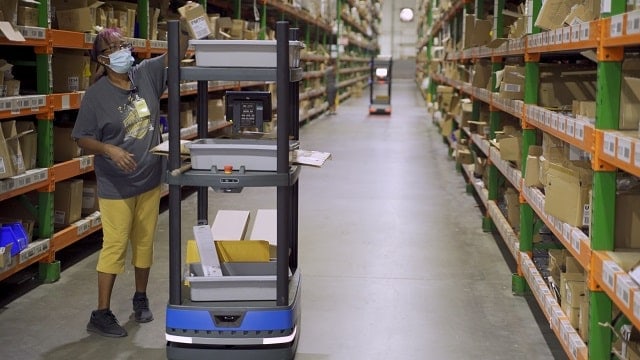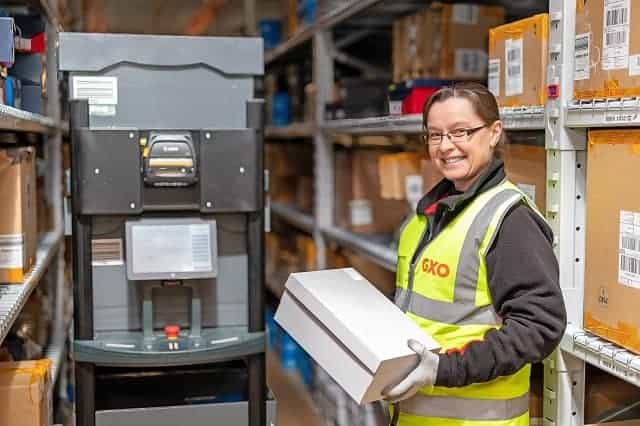
Looking to discover the secret to an effective and efficient returns management process? The returns management process is part dispute resolution, part customer support, part logistics and part inventory management.
The way you design and execute your returns management process is becoming increasingly important, and improving these processes is among the top warehousing trends in 2022. Returns management influences your customer experience and by extension your bottom line. The ideal returns management process is cost-effective for retailers and stress-free for customers.
With consumerism narrowing the competitive gap in marketplaces across the globe, a streamlined returns management process is necessary for businesses to reduce associated costs and differentiate themselves and their brand in the minds of shoppers. To help you get up and running, let’s look at six ways to optimize your returns management process.
1. Collect and analyze returns data
To avoid the hassle of dealing with unhappy customers and unnecessary returns, take the time to understand why customers return products. Forward-thinking retailers use automated returns management solutions to track, view and analyze returns data in one place.
Tracking relevant returns data to identify which products have the highest rate of returns and why. Such products may have poor packaging or are defective. Improving product quality assurance reduces the number of future returns by identifying defective products before they’re shipped out. Analyzing your returns data provides in-depth insights into every step of the returns management workflow and should help you understand:
- The return rate for each product and product group
- The percentage of returns resold at full price or discounts
- The percentage of returns salvaged
- How returns routing decisions can be optimized for efficiency
- The cost per unit to process returns through each return channel
2. Properly design your returns management workflow
Strategically (re)designing your returns process can improve visibility and transparency for stakeholders and reduce the time between a customer initiating a return and their receipt of a refund or replacement product.
Making it easy for your shoppers to make returns builds trust and significantly impacts customer loyalty. There are several ways to streamline the returns process and experience for your customers. They include:
- Have a clear return policy
- Offer free return shipping
- Provide shoppers with the ability to track their returns
- Issue refunds or credit customers’ accounts with equivalent store credits on time
- Deploy a robust returns management system
- Leverage autonomous mobile robots with Returns Putaway capability – to return items back on the shelves to maximize warehouse space and profitability.
Download this white paper to learn how to optimize returns management.
3. Write clear return policies
Writing concise, easy-to-understand return policies and sharing them with shoppers across all sales channels can save you a lot of hassle and benefit both shoppers and your business. Your return policies should clearly state:
- The timeline for returns (2 weeks, a month, a year, etc.)
- Conditions for returns (tags on, receipt of purchase, original packaging, etc.)
- Exceptions
- The time it takes to process refunds
- Timeline and options for customers to receive refunds (store credit, cash/card refunds)
If it’s not feasible to provide all shoppers with free returns, consider offering free returns for items over a certain value or to loyalty members. You can also make exchanges free but charge a fee for returns or offer free returns to shoppers who drop off the product at a store.
4. Automate the returns management process

Automating the reverse logistics workflow reduces costs and inaccuracies. It also increases the efficiency of routing and processing return requests. To this end, a returns management system can help you manage everything that goes into the returns process from start to finish. This includes configuration/optimization of return workflows (to drive a faster returns process), returns merchandise authorization (RMA) initiation, returns processing, customer portals, and customer notifications.
This facilitates a convenient self-service return experience for your customers and an efficient, hassle-free process for you. With this in place, your customers can quickly exchange items they aren’t satisfied with rather than issuing chargebacks or blacklisting your store.
Savvy businesses also leverage automated order-picking solutions that can work in reverse to restock returns. Autonomous mobile robots (AMRs) with Return Putaway capabilities, like 6 River Systems’ solution, are flexible and scalable solutions that retrieve information from the returns management system. 6 River Systems’ AMRs guide associates through tasks to streamline putaway processes so returned items can be quickly and accurately placed for restocking, repairs or disposal. Businesses leveraging 6 River Systems’ solution can improve productivity by 40% over manual carts, improve accuracy, reduce in-aisle travel and eliminate long walks through the facility.
5. Integrate outbound shipment with returns pickup
Incorporating reverse logistics into the outbound logistics process will significantly improve your returns management process. The right logistics application or 3PL provider can provide you with the ability to quickly redirect delivery drivers within the vicinity to make return pickups from nearby shoppers.
When planning the routes and schedules for deliveries, make provisions for product returns as well. This speeds up the return process for shoppers, creates a great customer experience and helps you save resources. You can also make plans to expand capacity for your returns handling operations during peak seasons.
6. Outsource your returns management process
Businesses typically partner with third-party logistics providers for outbound shipments and handle other ecommerce fulfillment processes and activities in-house, including returns management. However, you can choose to maximize your partnership with your 3PL by letting them handle returns. Doing this allows you to take advantage of your logistics partners’ systems, processes and expertise. While outbound shipments form the core business for most 3PLs, others offer returns management as a special or add-on service. Such services include:
- Vendor management for returns, related fees, etc.
- Inventory management tracking, cash flow, freight & labor
- Valuation, appraisal and sales of products not going back into circulation
- Test, repair and refurbishment of products
- Recycling options where necessary
Looking ahead
Returns management is an integral and unavoidable aspect of the retail and e-commerce fulfillment process. And although it is an expense, the proper identification, sorting, reshelving or disposal of returned products can significantly impact the way returns affect your bottom lines.
While it will require resources and dedication, taking the time to optimize your reverse logistics network for effective returns management is well worth the effort. Combining skilled personnel with the right automation solutions can help speed up the identification, repackaging, restocking and resale of returned items. Likewise, the above strategies can help you deliver a seamless, hassle-free returns experience for your customers and a stress-free returns process for your business.
Learn more about autonomous mobile robots and how they can help to streamline your fulfillment and returns management processes by downloading our white paper, The Business Case for Autonomous Mobile Robotics.


